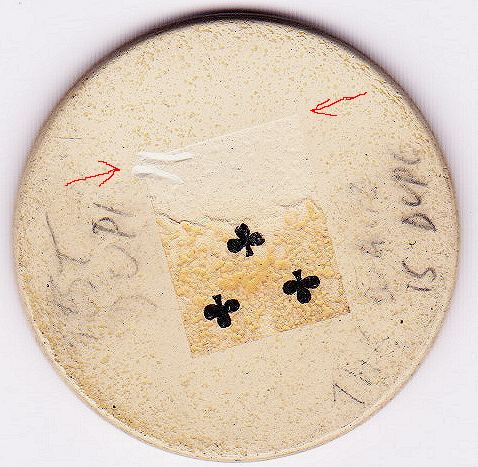|
|
|

 ()
() I have examined the playing card chips some more, and I conclude that they are inlaid a little, not simple paste-ons.
I experimented on a duplicate chip of mine (5 of clubs), shown below. Using hot water, soap and a pared down tooth brush, I scrubbed away the paper playing card. Then, running my finger nail from the center of the playing card up to the top of the chip, I could feel the slightly recessed edge of where the playing card would end. You can see the line in the picture below, between the two red arrows.
The "inlay" is extremely thin. I think it was placed on the chip during the manufacturing process and pressed in with glue and heat, just like the more familiar inlays. For one thing, they surely weren't glued on at home (as I earlier assumed) -- the inlays are very secure in the chip. They are there permanent-like after all these years. If they were glued on at home, they would come undone and lifted at the edges.
You could call them early "crest and seal" chips or precursors of crest and seal chips. Just like with many chips we now call crest and seal chips, there is no sealant over the inlay.

Robert

|
|